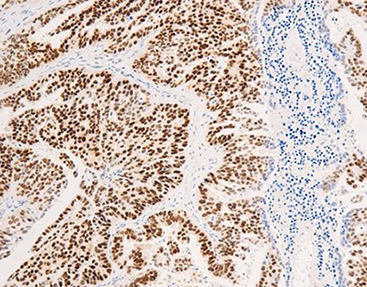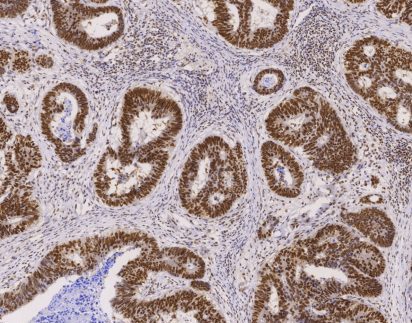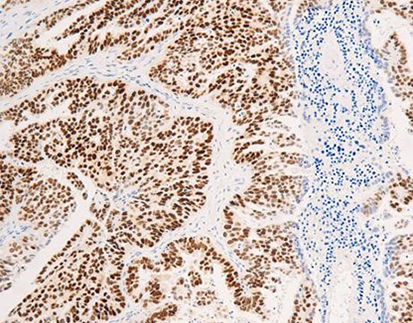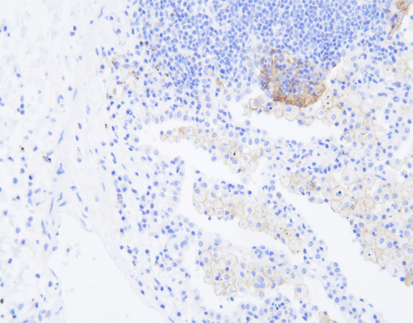Understanding the Role of Primary Antibody in Immune Response

By admin
What is a Primary Antibody?
Definition and Basic Concept
The primary antibody is a crucial component in the immune system and various research applications. Essentially, a primary antibody is an immunoglobulin that specifically binds to a unique epitope on an antigen molecule. By recognizing and attaching to these antigens, primary antibodies help to flag harmful invaders for destruction or neutralization by the immune system. This specificity makes them invaluable in identifying and targeting pathogens, as well as in laboratory settings for diagnosing diseases, studying cellular processes, and more.
Importance in Research and Diagnostics
Primary antibodies are of immense importance in both research and diagnostics. In the realm of medical research, they are used extensively in techniques such as Western blotting, immunofluorescence, and ELISA (enzyme-linked immunosorbent assay). These applications allow scientists to detect and quantify proteins, study interactions, and observe cellular behaviors. In diagnostics, primary antibodies are essential for identifying specific proteins or other molecules associated with disease states. This helps in the early diagnosis of conditions like cancer, infectious diseases, and autoimmune disorders, thereby allowing for timely and effective treatment interventions.
Types of Primary Antibodies
Monoclonal vs. Polyclonal
Primary antibodies can be classified into two main types: monoclonal and polyclonal. Understanding the differences between these types is essential for selecting the appropriate antibody for specific research or diagnostic applications.
Characteristics of Monoclonal Antibodies
Monoclonal antibodies are derived from a single clone of B cells. They are highly specific, binding only to one unique epitope on an antigen. This high specificity reduces the likelihood of cross-reactivity with other molecules, making monoclonal antibodies particularly useful in applications where precision is paramount. Monoclonal antibodies are often preferred for therapeutic uses and targeted studies due to their consistent and reproducible results.
Characteristics of Polyclonal Antibodies
Polyclonal antibodies, on the other hand, are produced by multiple B cell clones. These antibodies recognize and bind to multiple epitopes on the same antigen, making them highly sensitive and excellent at detecting low-abundance proteins. Their ability to bind to various sites on an antigen can result in strong signals in assays, which is beneficial in applications like Western blotting and immunohistochemistry. However, the use of polyclonal antibodies can sometimes lead to higher background noise due to their broader specificity.
Host Species and Isotypes
Another layer of classification for primary antibodies is based on the host species from which they are derived and their specific isotypes. These factors can influence the antibody’s performance in different experimental contexts.
Commonly Used Host Species
Primary antibodies are commonly derived from several host species, including mice, rabbits, goats, and rats. Each species offers unique advantages, with some producing antibodies that exhibit higher affinity or stability. For instance, rabbit antibodies are often preferred for their higher affinity and better performance in detecting antigens in complex biological samples. The choice of host species can impact the antibody’s effectiveness in binding to the target antigen and is therefore a crucial consideration in experimental design.
Different Isotypes and Their Usages
Antibody isotypes, such as IgG, IgM, IgA, and others, also play a vital role in determining the function and application of primary antibodies. IgG is the most commonly used isotype in research due to its ability to efficiently target pathogens and long half-life. IgM, being one of the first antibodies produced in response to an antigen, is useful in studying early immune responses. Other isotypes, like IgA, have specialized roles in mucosal immunity and may be selected based on the specific needs of the investigation. Understanding the distinct properties and applications of various isotypes enhances the precision and outcome of research studies.
By diving deeper into what primary antibodies are and the different types available, we can better appreciate their significance and adaptability in scientific research and medical diagnostics.
Applications of Primary Antibodies
Western Blotting
Western blotting is a widely used analytical technique in molecular biology and immunology for detecting specific proteins from a complex mixture. In this method, primary antibodies are used to bind to specific target proteins that have been separated by gel electrophoresis and transferred onto a membrane. The bound primary antibody is then detected using a secondary antibody conjugated with a reporter enzyme or fluorescent dye. The precision and specificity of the primary antibody are crucial, as they determine the accuracy of the protein identification and the strength of the signal. Researchers rely heavily on Western blotting to confirm protein expression levels, study post-translational modifications, and validate results from other experimental techniques.
Immunofluorescence
Immunofluorescence is another valuable application of primary antibodies, enabling the visualization of protein location and distribution within cells or tissues. By labeling a primary antibody with a fluorescent tag or using a labeled secondary antibody, scientists can observe the presence and behavior of target antigens under a fluorescence microscope. This technique is instrumental in identifying cellular structures, tracking protein dynamics, and studying disease mechanisms at a cellular level. The choice of primary antibody, its specificity, and the quality of the fluorescent signal are critical factors influencing the success of immunofluorescence experiments.
ELISA (Enzyme-Linked Immunosorbent Assay)
ELISA is a highly sensitive and quantitative technique used for detecting and measuring specific antigens in a sample. Primary antibodies play a central role in ELISA by binding to the target antigen, which is then detected using an enzyme-linked secondary antibody that produces a measurable signal. The versatility of ELISA allows for its application in various fields, including diagnostics, vaccine development, and biomarker discovery. The accuracy of this assay heavily depends on the specificity and affinity of the primary antibody, making it essential to select antibodies with high binding efficiency and minimal cross-reactivity.
How to Choose the Right Primary Antibody?
Key Selection Criteria
Choosing the right primary antibody is a critical step in any experimental design, ensuring the reliability and accuracy of the results. Several key criteria must be considered during this selection process.
Specificity and Sensitivity
Specificity refers to the ability of a primary antibody to bind exclusively to its target antigen without cross-reactivity with other proteins. Sensitivity, on the other hand, is the antibody’s ability to detect even low levels of the antigen. A balance between high specificity and sufficient sensitivity is crucial for obtaining clear and interpretable results in various assays.
Cross-Reactivity
Cross-reactivity occurs when an antibody binds to non-target proteins, leading to false positives and compromising the accuracy of experimental outcomes. Evaluating an antibody’s cross-reactivity with other proteins in the sample is essential to avoid misleading results and to ensure that the observed signals are genuinely due to the target antigen.
Application Suitability
Different primary antibodies are optimized for specific applications, such as Western blotting, immunofluorescence, or ELISA. It is important to select an antibody validated for the intended application to achieve optimal performance. Checking for published data or supplier-provided validation information can guide researchers in making an informed choice.
Storage and Handling of Primary Antibodies
Proper Storage Conditions
Proper storage of primary antibodies is vital for maintaining their stability and activity over time. Most antibodies are stored at 4°C for short-term use, while long-term storage typically requires -20°C or -80°C conditions to prevent degradation. Repeated freeze-thaw cycles can damage the antibody’s structure and reduce its effectiveness, so aliquoting the antibody into smaller volumes can help preserve its integrity.
Handling Tips for Maintaining Activity
In addition to correct storage, handling techniques are crucial for preserving antibody activity. It is important to avoid prolonged exposure to light, especially for fluorescently labeled antibodies, as this can cause photobleaching. Additionally, using sterile techniques and minimizing contamination risk by employing clean pipette tips and reagents can help maintain the antibody’s functionality and prevent experimental errors.
Optimizing Results with Primary Antibodies
Tips for Reducing Non-Specific Binding
Non-specific binding can obscure results and reduce the clarity of experimental data. To mitigate this issue, various strategies can be employed, such as optimizing antibody concentration, using appropriate blocking agents, and adjusting buffer conditions. Pre-incubating the sample with a control antibody or serum can also help reduce non-specific binding and improve signal specificity.
Protocols and Best Practices
Adhering to established protocols and best practices can significantly enhance the quality and reproducibility of experiments involving primary antibodies. Consistency in antibody dilutions, incubation times, and washing steps ensures that results are comparable across different experiments and laboratories. Additionally, documenting detailed experimental conditions and any deviations from standard protocols can help troubleshoot issues and refine techniques for future studies.
By thoroughly understanding the applications, selection criteria, storage, handling, and optimization strategies related to primary antibodies, researchers and diagnosticians can leverage these critical tools to achieve accurate, reliable, and meaningful results in their studies and clinical assessments.
Your Reliable Partner:Celnotive
Celnotive offers an extensive range of primary antibodies, which are essential tools in the field of immunohistochemistry. With over 460 primary antibodies in their catalog, they provide researchers with a diverse selection to target various proteins of interest. These antibodies are designed to deliver high sensitivity and specificity, ensuring reliable results in experiments such as target detection and drug development. The company’s expertise in antibody research and development is evident in their proprietary secondary antibody detection systems and quality control products, which complement their primary antibody offerings.
Their primary antibodies are developed using advanced technologies, including murine monoclonal antibodies produced through hybridoma cell fusion technology. This method yields monoclonal antibody-producing cell lines that secrete high-quality antibodies, with some, like ER, PR, and PD-L1, being recognized for their clarity in guiding treatment plans and passing stringent quality control evaluations.











